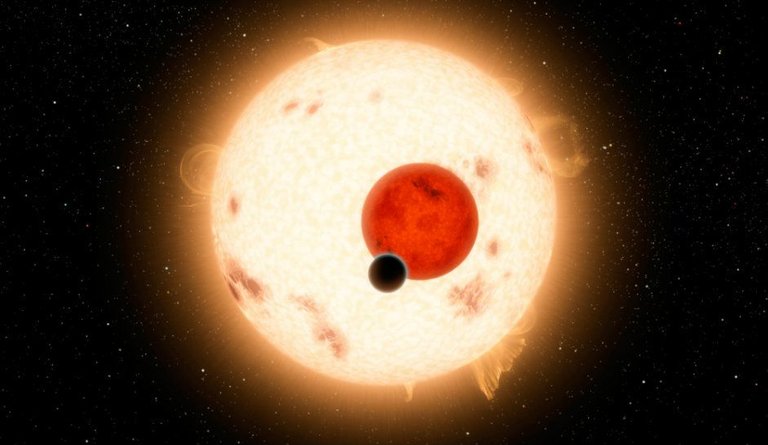NASA's Hubble space telescope has recognized a rankling hot planet outside our close planetary system where it "snows" sunscreen. The planet, called Kepler-13Ab, circles near its host star, Kepler-13A, said the investigation distributed in the Astronomical Journal.
Kepler-13Ab, which is more than 1,730 light-years from Earth, is so near its parent star that it is tidally bolted. One side of the planet dependably faces the star and the opposite side is in perpetual haziness. The issue is the sunscreen – titanium oxide – precipitation just occurs on the planet's changeless evening time side, leaving the sizzling hot, daytime side, without insurance.
The cosmologists trust that capable breezes convey the titanium oxide gas around to the colder evening time side, where it gathers into crystalline pieces, shapes mists, and accelerates as snow. Kepler-13Ab's solid surface gravity – six times more noteworthy than Jupiter's – hauls the titanium oxide snow out of the upper climate and traps it in the lower air.
The perceptions affirm a hypothesis from quite a long while back that this sort of precipitation could happen on monstrous, hot planets with capable gravity."Presumably, this precipitation procedure is going on a large portion of the watched hot Jupiters, however those gas mammoths all have bring down surface gravities than Kepler-13Ab," said lead analyst Thomas Beatty of Pennsylvania State University in the US.
"The titanium oxide snow doesn't fall sufficiently far in those airs, and afterward it gets cleared back to the more sweltering dayside, revaporises, and comes back to a vaporous state," Beatty added.The specialists utilized Hubble's Wide Field Camera 3 to direct spectroscopic perceptions of the exoplanet's environment in close infrared light.
Hubble mentioned the objective facts as the removed world went behind its star, an occasion called an auxiliary overshadowing. This kind of shroud yields data on the temperature of the constituents in the climate of the exoplanet's dayside.